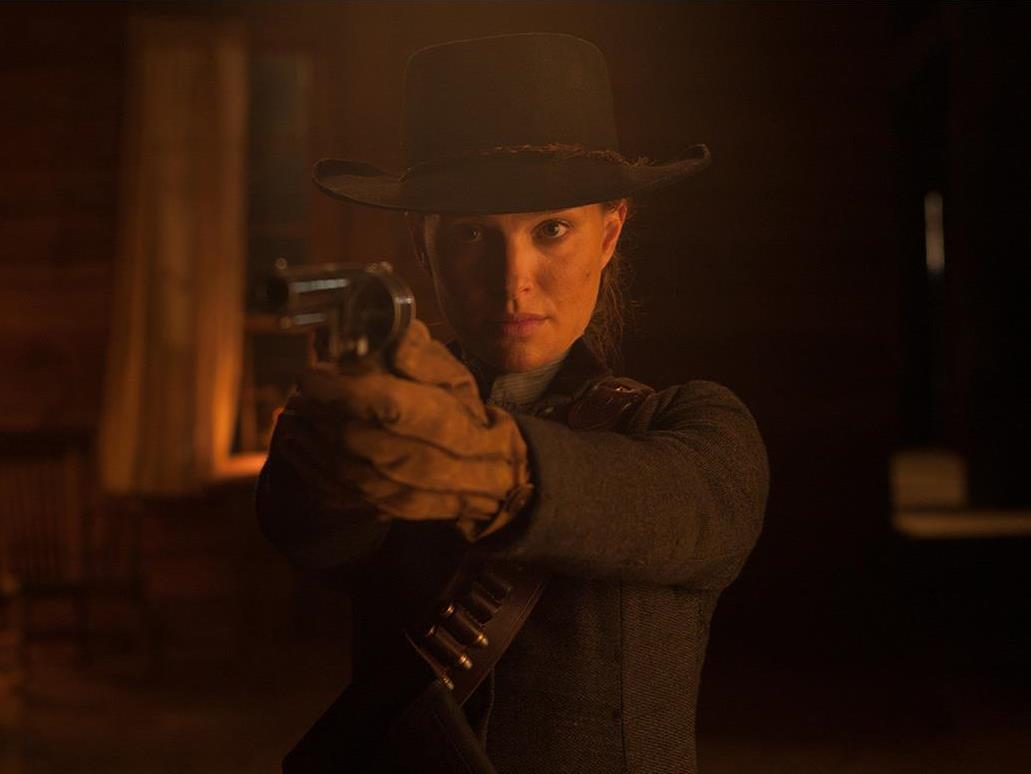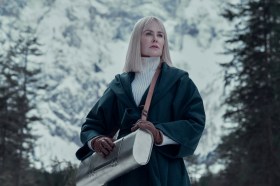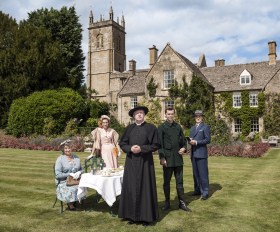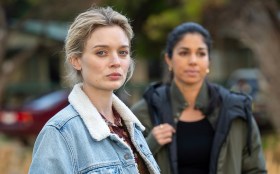Named as it is for its frequent favouring of old west timing and frontier settings, the western is a genre about space. Vast plains offer room for heroes to roam, cosy homesteads provide safe havens for families to stay out of harm’s way, and wars are waged to conquer the former and protect the latter. Jane Got a Gun acknowledges these customary spatial realms, but spies them through different eyes. Exploring one woman’s attempt to secure her small patch of land — and salvage the modest life she’s fought to make her own at the same time — the Gavin O’Connor (Warrior)-directed, Brian Duffield (Insurgent), Anthony Tambakis (Warrior) and Joel Edgerton (The Gift)–written effort colours conventional oater components with a view from the other side of the gender divide.
Of course, the feature’s moniker makes its female-focused take on the genre plain from the outset, as does its introductory scenes. Sans firearms and snuggled in bed with her young daughter when the film opens, Jane Hammond (Natalie Portman, Knight of Cups) is swiftly thrust into action when her husband Bill (Noah Emmerich, TV’s The Americans) returns riddled with bullet holes and warning of the dangerous outlaws on his trail. Soon, she’s leaving her child with a neighbour, rustling up the assistance of her ex-lover Dan Frost (Edgerton, last seen on screen in Midnight Special), and attempting to evade the henchmen sent by gang leader John Bishop (Ewan McGregor, Mortdecai). And yet, while she rides far and wide to rally help, she returns home to make her stand.
Jane’s may seem a familiar tale, and it is; however its shift in perspective proves quietly rousing and patiently revealing. O’Connor handles the switch in focus with such subtlety that the movie’s traditional trappings still stare viewers in the face, but the prominence and perception of its protagonist are inescapable. Accordingly, whether Jane is galloping across the sun-drenched landscape, brandishing a weapon on her front porch, navigating past and present romantic complexities, or naively trusting others in flashback sequences, the feature’s recognisable story doesn’t just witness her plight, but is reshaped by her efforts. Though Jane Got a Gun is ostensibly yet another film about defeating an oppressive environment and defending a person’s place within it, its take on the situation is tied to the problems Jane faces, the variances she encounters, the boundaries she breaks, and the spaces she both commands and seeks due to her gender
Indeed, Portman approaches the role in a manner that equally nods to and flouts the notions set by westerns gone by, playing Jane as a woman who would’ve been a happy wife to either of Emmerich or Edgerton’s amorous prospects in other circumstances, but confidently assumes control of her own destiny when necessary. Domesticity doesn’t rob Jane of agency or authority, nor does gun-slinging steal away her caring feelings, nor do her relationships with two men dictate her choices. Instead, Portman’s performance expresses the complexity of juggling all of the above, as well as many further aspects of womanhood in a time and place marked by prescribed duties and firm expectations, in every conflicted look and stance.
In fact, internal clashes prove as crucial as external battles in Jane Got a Gun, as the feature endeavours to traverse, dissect and redefine space on several levels. In support, Edgerton fares best as the former paramour also tasked with seeing different shades of his leading lady, as well as discovering some of his own — and while McGregor’s villain may appear somewhat cartoonish, he too strives to hint at depths and struggles behind his fearsome yet polite nemesis. With the key cast convincingly demonstrating the characters’ inner frays, cinematographer Mandy Walker (Tracks) offers up sometimes sweeping, sometimes shadowy visuals to match. Emphasising the sense of ever-lingering roughness evident in every seemingly scenic sight, as well as in the intricate work of production designers Tim Grimes (Luck) and James F. Oberlander (art director of The Lone Ranger), Jane Got a Gun looks as it feels: standard at a glance, yet also teeming with the kind of nuance and texture that only finds room to breathe over time.
Rating: 3 stars out of 5
Jane Got a Gun
Director: Gavin O’Connor
USA, 2016, 98 mins
Rating: MA
Essential Independents: American Cinema, Now
www.essentialindependents.com
Sydney: 17 May – 1 June
Melbourne: 18 May – 1 June
Brisbane: 19 May – 1 June
Canberra: 19 May – 1 June
Adelaide: 26 May – 8 June
Actors:
Director:
Format:
Country:
Release:





